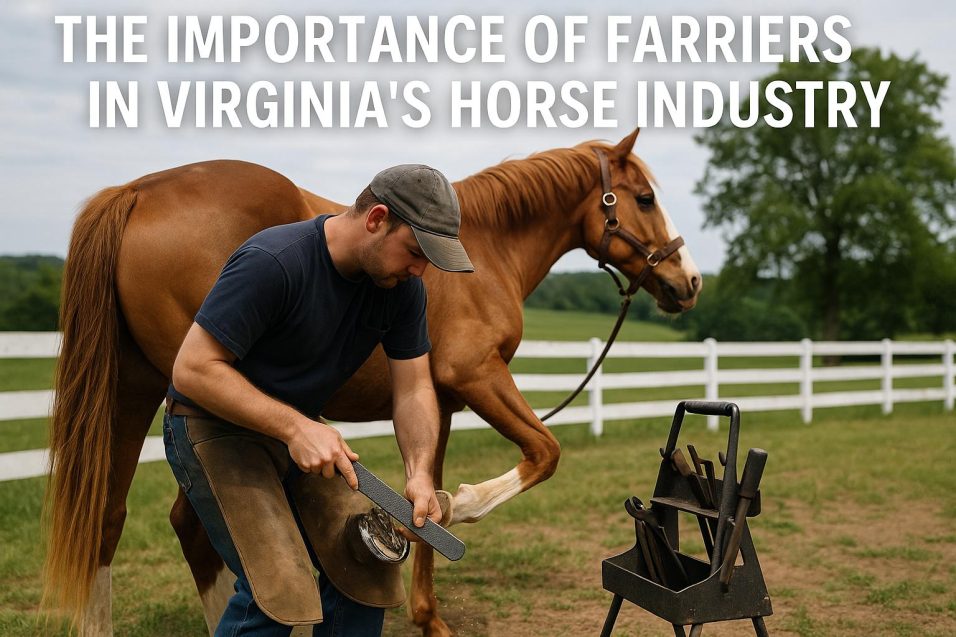The Role of Farriers in Virginia’s Equine Landscape
The horse industry in Virginia is not only a cornerstone of the state’s economy but also a part of its deep-seated cultural heritage. Central to this industry is the indispensable role played by farriers. These professionals are specialists in equine hoof care, performing tasks that are crucial to maintaining the health and performance of horses across a wide array of equestrian disciplines, including racing, show jumping, and dressage.
Historical Context of Farriery in Virginia
Virginia’s equestrian tradition dates back to the colonial era, and throughout its history, farriery has been a key trade. Initially, farriers were akin to blacksmiths, combining the arts of forging horseshoes and providing rudimentary veterinary care. Over the centuries, however, the expertise of farriers has significantly evolved, narrowing its focus primarily to the complex needs of the horse’s hoof. This evolution highlights the increased understanding of equine science and the crucial role the hoof plays in the overall well-being and performance of horses.
Skills and Techniques
The skills required of a modern farrier are extensive and multifaceted. A farrier must possess profound knowledge of equine anatomy, particularly the foot and leg structure, and must also understand the biomechanics of equine movement. This comprehensive understanding enables farriers to effectively perform tasks such as trimming and balancing hooves, as well as forging and fitting horseshoes that cater to the nuanced requirements of individual horses.
Regular Hoof Maintenance
Regular hoof maintenance is a critical aspect of the services provided by farriers. This routine care is essential in preventing common conditions like thrush and laminitis, which can severely impact a horse’s health and performance. Generally, farriers recommend that horses undergo trimming and shoeing services every six to eight weeks, though this schedule can vary depending on factors such as the horse’s activity level, diet, and the environmental conditions it lives in. These regular visits by a farrier are crucial for catching potential hoof issues at an early stage, before they can develop into more serious problems.
Custom Shoeing Solutions
Apart from standard shoeing, experienced farriers often employ customized shoeing strategies to tackle specific challenges. For instance, performance horses, which often participate in demanding activities like racing or show jumping, may benefit from specially designed shoes that improve their agility and traction, thus enhancing their competitive edge. On the other hand, horses suffering from specific health conditions, such as navicular disease, might require therapeutic shoeing solutions aimed at managing pain and promoting long-term hoof health.
Economic Impact
The contribution of farriers to Virginia’s equine industry extends well beyond just hoof care. By maintaining the health and performance of horses across various disciplines, farriers play a crucial role in sustaining the state’s horse industry economically. Their work ensures that horses remain in top condition, supporting the prosperity and longevity of sectors like racing, show jumping, and dressage. Furthermore, the vibrant horse-related events hosted across Virginia spawn economic opportunities for a myriad of associated businesses in sectors such as hospitality, retail, and trade services, thereby amplifying the economic impact of the equine industry.
Training and Certification
Becoming a certified farrier demands a significant investment of time and dedication to learning and mastering the craft. Prospective farriers often must complete a formal education program or an apprenticeship, which provides hands-on experience under the guidance of seasoned professionals. Certification by respected organizations, such as the American Farrier’s Association, not only signifies a farrier’s level of expertise and commitment to maintaining industry standards but also assures clients of their competence and dedication to ongoing professional development.
Future Challenges and Opportunities
In Virginia, as is the case elsewhere in the equine world, the future of farriery is met with both challenges and opportunities. Among the challenges is the pressing need for expanding and enhancing training programs, which are essential for preparing the next generation of skilled farriers. Moreover, as technology rapidly evolves, there is a growing impetus to integrate modern advancements into the practice of farriery. This integration could include utilizing the latest advancements in materials science and equine health to develop innovative shoeing techniques and equipment that improve both horse welfare and farrier efficiency.
Despite these challenges, numerous opportunities lie on the horizon for farriers in Virginia. The continued synthesis of traditional craftsmanship with modern scientific insights promises to unlock new frontiers in equine care. By embracing advancements and maintaining unwavering dedication to their craft, farriers are poised to remain a pivotal pillar of Virginia’s equine industry, contributing to its global standing and enduring success.
For those interested in delving deeper into the intricacies of the equine industry in Virginia, a wealth of resources and support is available through organizations such as the Virginia Horse Council, which provides valuable insights and educational opportunities for both industry veterans and newcomers alike.


